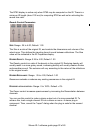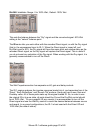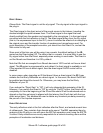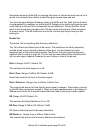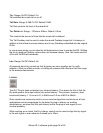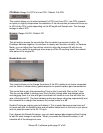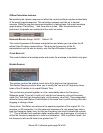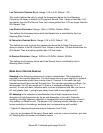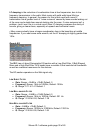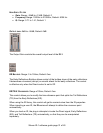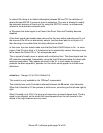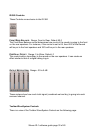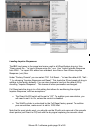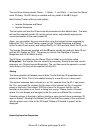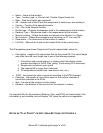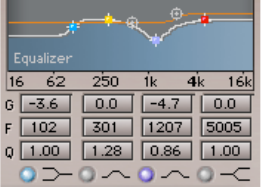
LF damping is the reduction of reverberation time at low frequencies, due to low
frequency transmission in the walls. Most rooms with solid walls have little low
frequency damping. In general, the reason for this is that a wall with more LF
transmission has a greater level of “noise nuisance” caused by bass sounds leaking out
of the room and outside bass sounds leaking into the room. If noise nuisance isn’t a
problem, (and it won’t be in a virtual room!) then LF damping increases the clarity of
sounds, giving a clearer bass, especially on speech and orchestral music.
• Many rooms actually have a longer reverberation time in the bass than at middle
frequencies. If you want some extra warmth, set the LF damping at slightly greater than
1.00x.
Reverb EQ
The IR-1 has a 4-band Paragraphic EQ section with a Low Shelf filter, 2 Bell-Shaped
filters and a High Shelf filter. All 4 bands have a variable Q that controls bell bandwidth
as well as overshoot resonance for the shelves.
The EQ section operates on the Wet signal only.
L
OW SHELF FILTER
• Gain: Range: –24dB to +12dB; Default: 0
• Frequency: Range: 16Hz to 1600Hz; Default: 100Hz
• Q: Range: 0.71 to 1.41 Default: 1
LOW BELL-SHAPED FILTER
• Gain: Range: –24dB to +12dB; Default: 0
• Frequency: Range: 16Hz to 1600Hz; Default: 301 Hz
• Q: Range : 0.26 to 6.50; Default: 1.28
H
IGH BELL-SHAPED FILTER
• Gain: –24dB to +12dB; Default: 0
• Frequency: Range: 1000Hz to 21000kHz; Default: 1200 Hz
• Q: Range : 0.26 to 6.50; Default: 1.64
Waves IR-1 software guide page 30 of 40



